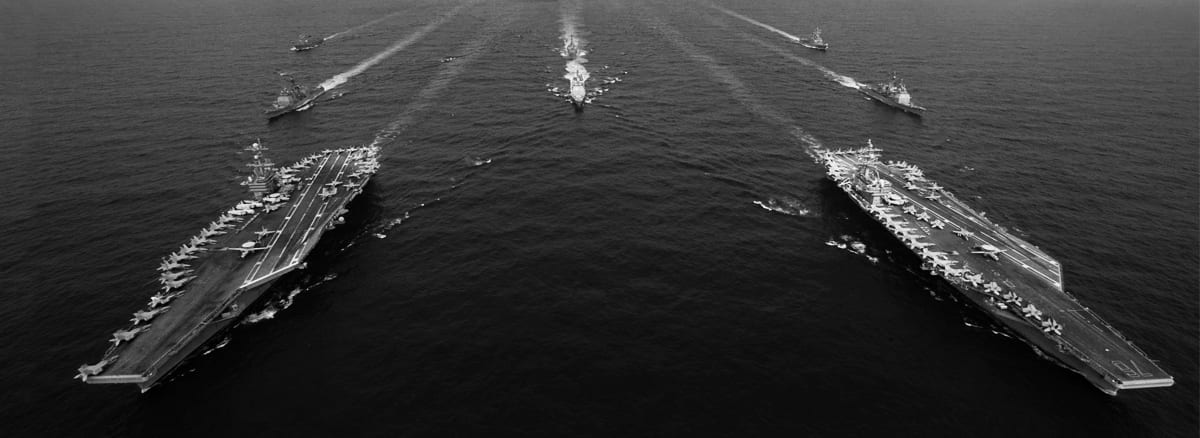ASEAN Political-Security Community: The Prospect of South China Sea
Muhammad Ammar Hidayahtulloh
Best 10 Author of Call for Essay: ASEAN Community Post 2015
ASEAN is located strategically at the crossroads of the Indian Ocean and the Pacific Ocean, and its history has been shaped as much by the influence by great civilizations as the impact of great powers. Nevertheless, even the ASEAN has the strategic geographic position; the conflict or dispute within the region is unavoidable that will threat the peace and stability in the region. It’s related to the geographic position of ASEAN which close to the disputable South China Sea as one of the most important waterways in the world ever since its discovery of the source of oil and gasses.
The South China Sea (SCS) becomes the scene of occurring territorial dispute between China and several ASEAN member states; the Philippines, Malaysia, Brunei Darussalam and Vietnam, moreover the involvement of United States of America within the dispute has been increasing the tension in the region. Every claimant states have their own claim and strategy to assert their claim toward their sovereignty in the South China Sea. China marked South China Sea claims in 1947 which simplifying the border to nine-dashes that become the historical basis for its territorial claims up to this day. The rest claimant states are ASEAN member states are also taking different claims. Vietnam claims all of both the Spratly and Paracel island chains in the South China Sea. Malaysia claims over the islands and features in the Southern Spratly, and has occupied five of them since 2009. Philippines claims over 50 features in the Spratly and occupies nine of them, where its military presence is second only to that of Vietnam. Brunei claims only two features in the Spratly islands, submerged formations called Louisa Reef and Rifleman Bank, and extends its EEZ around the feature and well into the southern section of the South China Sea. The United States also involving its military power in South China Sea in order to protect the rights freedoms, and lawful uses of sea and airspace guaranteed to all.
ASEAN has outlined its position toward the SCS dispute, it has firstly signed by the agreement between ASEAN and China agreed upon ASEAN-China Declaration on the Conduct of Parties in the South China Sea (DOC) in 2002 which approve ASEAN and China commitment to hand in hand maintain the SCS, furthermore DOC strongly support the adoption of Code of Conduct in SCS. Unfortunately, attributable to the overlapping claim on SCS at the moment the ASEAN’s position toward the South China Sea dispute is blurry. The difference stances among ASEAN countries on SCS dispute engender the disunity among ASEAN which leads the rough road in maintaining a unified position on a Code of Conduct. In 2012, ASEAN Foreign Minister Meeting failed to issue joint statement for the first time, because the Cambodia didn’t agree and it was not reach the consensus. Lately in 2016, Cambodia refused to include the verdict of Permanent Court of Arbitration toward the SCS dispute. Cambodia position is hardly affected by its close relation with China. Heretofore, it such a big dilemma when Cambodia and other ASEAN countries takes uncooperative position which supporting China and diminishing the ASEAN unity.
By 2015, ASEAN Political Security Community (APSC) has established as the community to ensure the peace and stability in the region by deepening and expanding the cooperation in political and security sectors in responding the regional and international challenges, so does in SCS dispute. APSC has three key characteristics, a rules-based community of shared values and norms; a cohesive, peaceful, stable and resilient region with shared responsibility for comprehensive security; and a dynamic and outward-looking region in an increasingly integrated and interdependent world. The well implementation of these three characteristics by all ASEAN countries, the inter-state trust, solidarity and integrity can be reached which will make ASEAN become a strong regional unity. Aftermath, ASEAN countries will prefer in the side with fellow ASEAN countries rather than outside powers for pragmatic reasons.
After APSC has well-achieved to create strong regional unity; under the framework of APSC, the South China Sea is the sea of peace, prosperity and cooperation which encourage the dialogue, consultation, and negotiation regarding the SCS dispute bilaterally between ASEAN and China intensively to meet the agreement among the claimant states by adopting the Code of Conduct. The ASEAN Foreign Ministers Meeting (AMM), ASEAN Defense Ministers Meeting (ADMM), ADMM-Plus, and ASEAN Regional Forum (ARF) will much contributive to support to meet the agreement among all claimant states of SCS. Furthermore, the statement of Chinese Premier Li Keqiang at the East Summit in 2015 to cooperate collectively maintains the South China Sea can be used as the weapon to force China to commit for maintaining the dispute.
Thus, ASEAN must be stand together with unified common position on the SCS dispute and ensure the multilateral and regional solution are in accordance with the main characteristics and principle of APSC which is rules-based, beneficial for all concerned, preserve regional peace, stability and development. Eventually, as the expected prospect, SCS dispute can be settled without any further tensions in the region and the joint cooperation of South China Sea can be attained by all claimant states under the adoption of Code of Conduct on parties in South China Sea.
References:
ASEAN Secretariat. ASEAN Political-Security Community Blueprint 2025. Jakarta: ASEAN Secretariat, 2016
ASEAN Secretariat. ASEAN Political-Security Community Blueprint. Jakarta: ASEAN Secretariat, 2009
Bhatia, Rajiv K., and Vijay Sakhuja. Indo-Pacific Region: Political and Strategic Prospect. New Delhi: Vij Book and Indian Council of World Affairs, 2014
Council on Foreign Relations. “China’s Maritime Disputes.” Accessed October 26, 2016. http://www.cfr.org/asia-and-pacific/chinas-maritime-disputes/p31345#!/
Pertiwi, Sukmawani Bela. “Is ASEAN Unity in Danger Form the South China Sea?.” The Diplomat. August 3, 2016 Accessed October 29, 2016. http://thediplomat.com/2016/08/is-asean-unity-in-danger-from-the-south-china-sea
Roach, J. Ashley. Foreword to Malaysia and Brunei: An Analysis of Their Claims in the South China Sea. Unites States: CNA Analysis and Solution Paper, 2014





